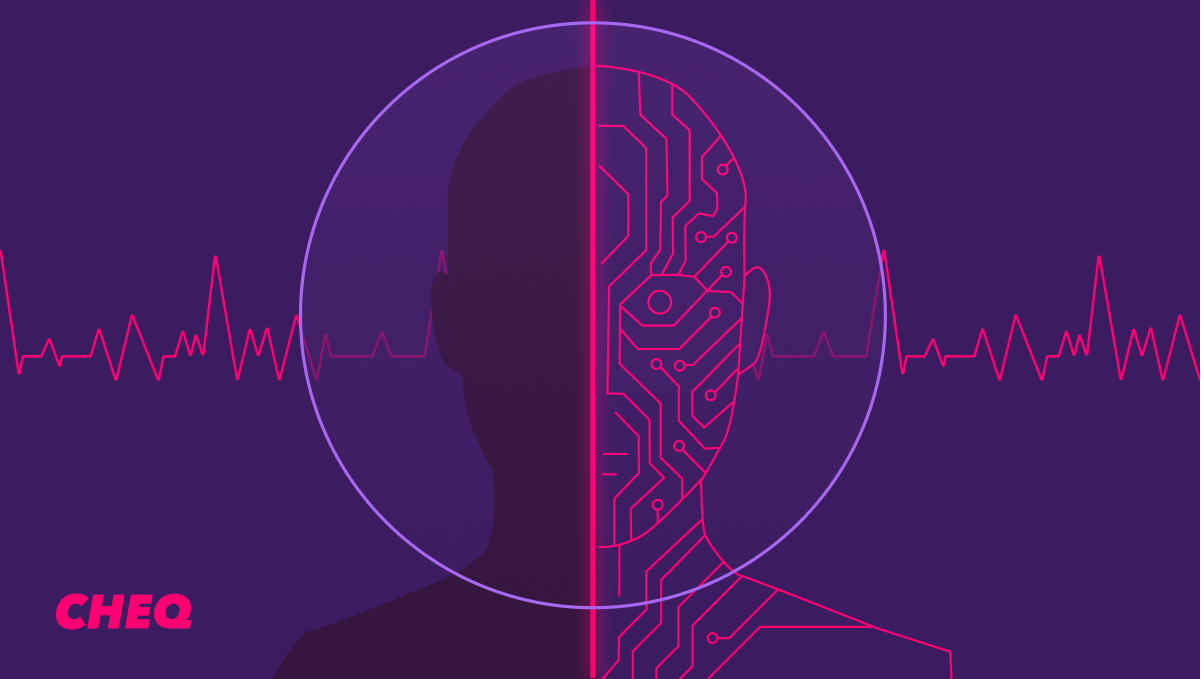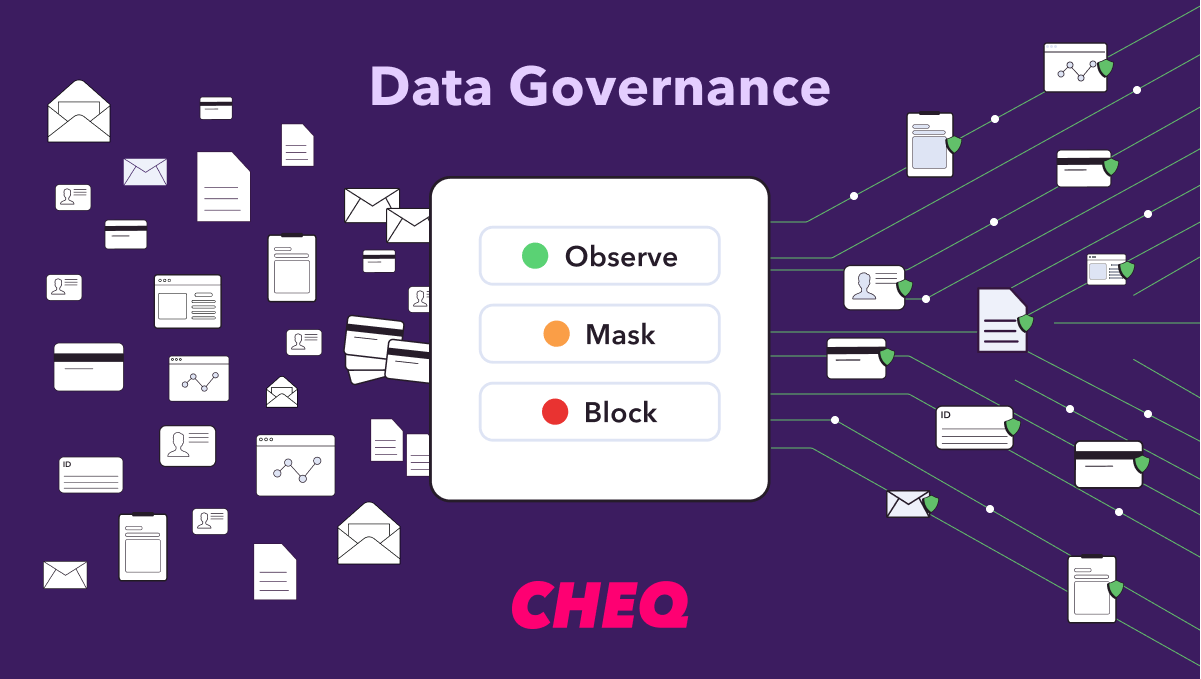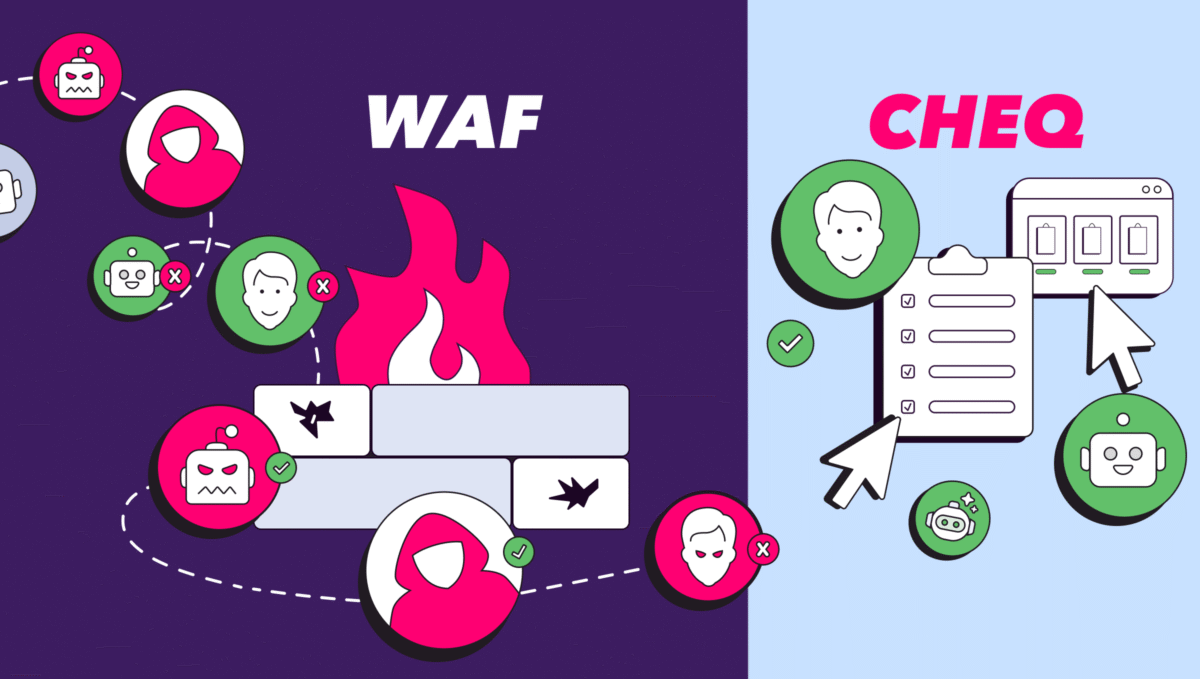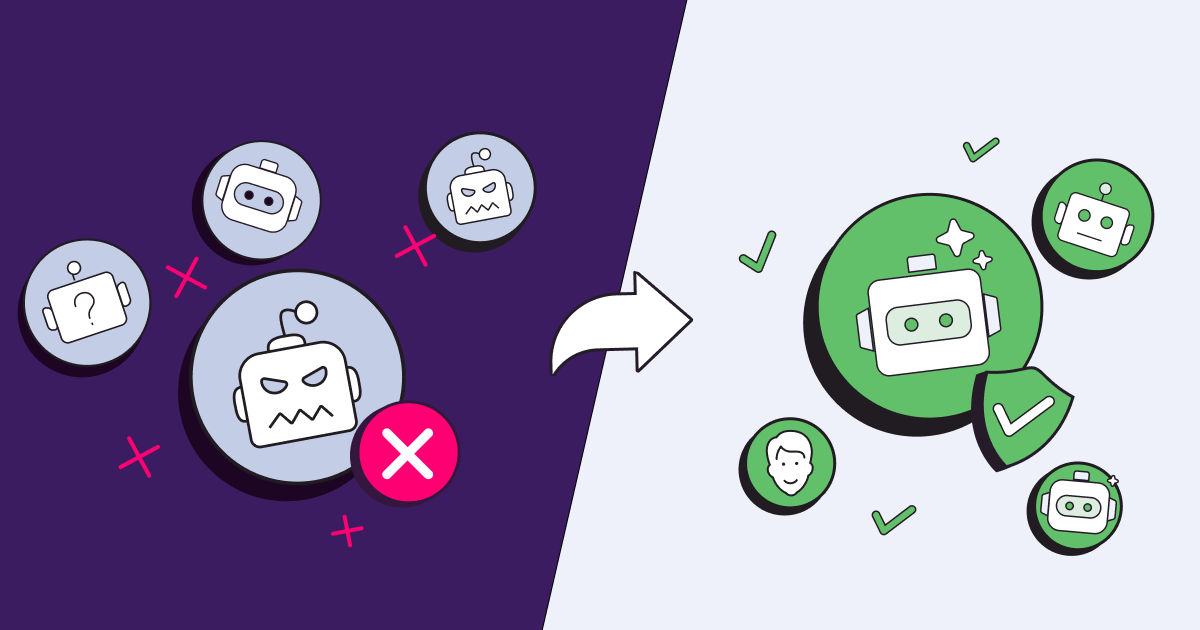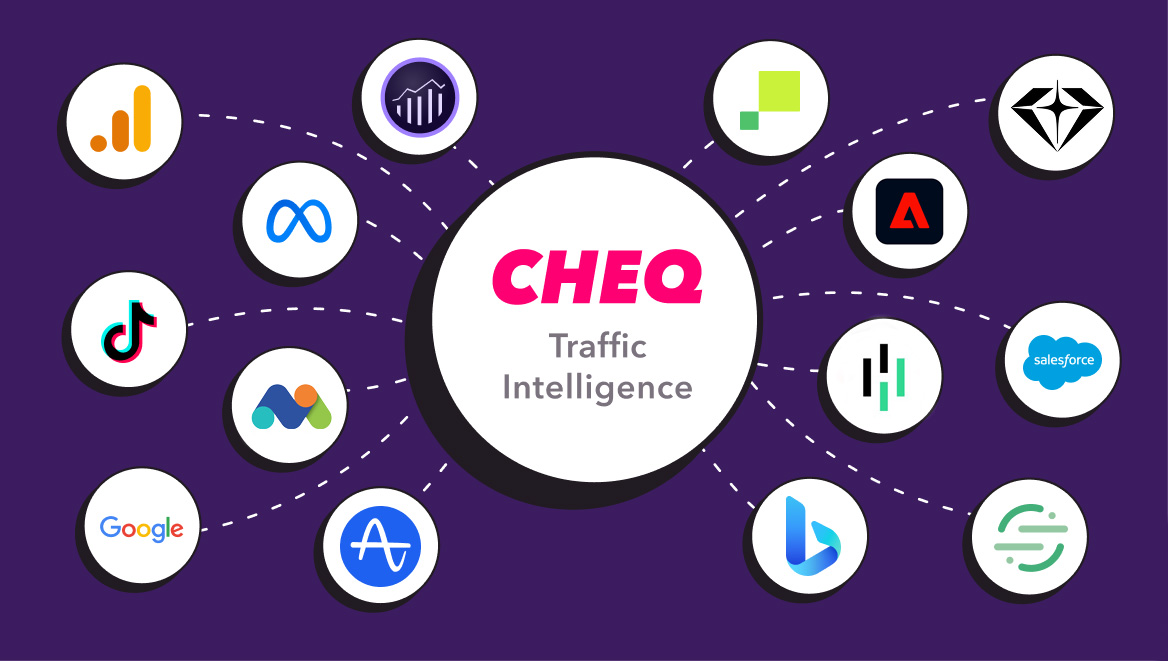From Bots to Buyers: The Rise of AI Agents in the Customer Journey
Amy Holtzman
|Bot & AI Agent Trust Management | August 21, 2025
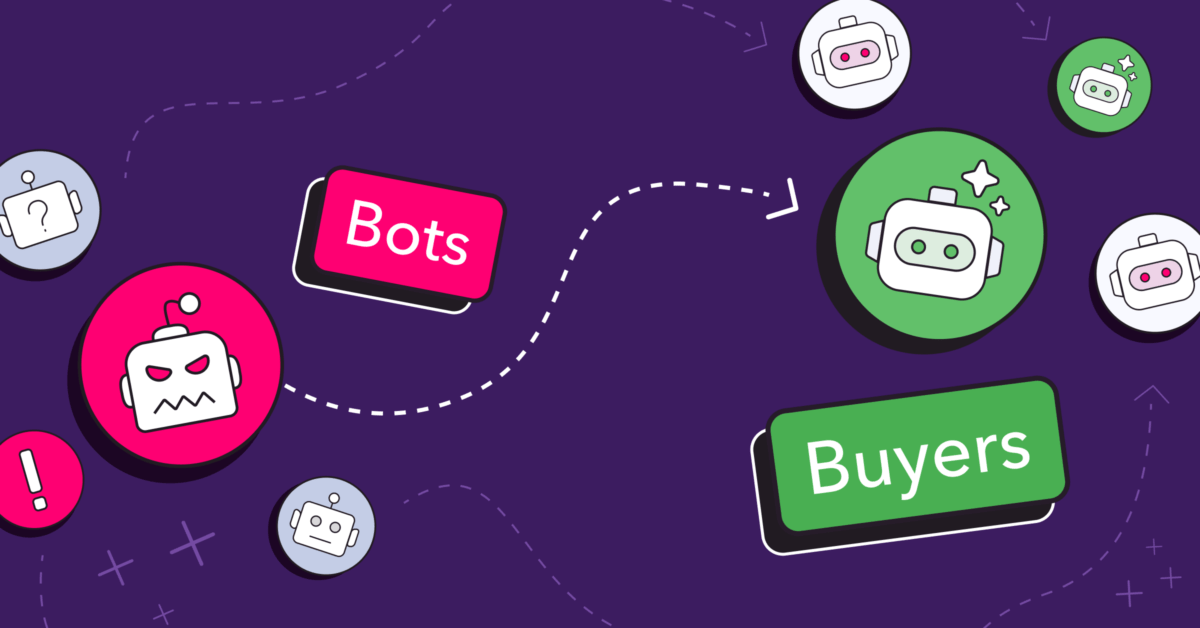
If you lead marketing, growth, or digital operations, you can feel the ground shifting. The digital customer journey isn’t what it used to be.
AI agents and “machine customers”—automation and scripts acting on behalf of humans—are quietly reshaping your website’s traffic. They’re filling out forms, comparing products, and even completing transactions.
Not in five years. Not next year. Right now.
At CHEQ, we analyze 6 trillion go-to-market signals across 1 million domains daily, and this gives us unique insight into emerging trends. The signals are clear:
- AI agents are actively engaging with business websites
- Traffic volume had been modest but exploded with the launch of ChatGPT Agent last month
- The impact is happening fastest in eCommerce, marketplaces, and enterprise technology, especially those with free trial experiences, but every industry will feel the impact soon
This isn’t just a security or website operations issue. It’s a growth opportunity that CMOs, CROs, CISOs, and digital leaders can’t afford to ignore. Your revenue is at stake, right along with how your brand is discovered and how your funnel functions.
The companies that adapt early will own the next generation of digital engagement. Those that don’t risk falling behind in a world that no longer runs on human interactions alone.
From Blocking Bots to Welcoming Buying Agents
Historically, unless it was a known SEO crawler, marketers have viewed all automated traffic as bad: draining ad spend, skewing analytics, and posing security and privacy risks. Security teams blocked it, marketers stayed in the dark, and no one questioned the approach.
But the landscape has changed.
Today, not all automated visitors are malicious. AI agents are now:
- Researching options before their human owner makes a decision
- Comparing competitors’ features and pricing
- Signing up for product trials and auditing the features
- Booking appointments for services and on sales rep calendars
- Completing purchases (yes, some are using credit card data, have purchasing authority, and transacting… today)
One of our B2B eCommerce customers regularly receives factory orders from machine customers—fully automated procurement systems placing large-volume, recurring orders with no human handoff. And, in marketplaces, we’re seeing AI agents complete full-funnel journeys—from discovery to checkout—without human intervention.
Automatically blocking automated and non-human traffic means blocking potential revenue and missing the signals behind the shift. It also means giving an edge to competitors who are already optimizing for both human and AI customer journeys.
Why This Matters Now
The rise of AI agents is fundamentally transforming digital engagement in three key ways.
- Discovery is becoming AI-first. Gartner estimates that by 2026, traditional organic search traffic will decline by 50%. And by 2028, half of all B2B buyers will rely on generative AI—tools like ChatGPT, Perplexity, or Gemini—for product discovery.
This means your first impression with many buyers will happen through an AI interface, not a human search engine.
- Engagement is structurally different. AI agents often have shorter, deeper site interactions—high-intent, single-task sessions that don’t fit traditional “time on page” or “pages per visit” models. These sessions require a new approach to analytics and engagement tracking. Because they don’t look like typical human behavior, they’re often misread as automation or anomalies by traditional analytics and bot mitigation tools.
That means important buying signals may be ignored—or worse, blocked outright.
- Revenue streams are evolving. Gartner forecasts that AI buyers could control up to $30 trillion in purchases by 2030. This isn’t a niche change, it’s a fundamental revenue mix shift.
The customer journey isn’t just human anymore. Every business needs a dual strategy for real buyers and their digital proxies.
How to Get Ready for Human + Machine Customers
Preparing isn’t about alarm. It’s about clarity and action. Here’s where to start:
- Measure your traffic accurately. Understand exactly how much of your web traffic is human, bot, or AI agent—and how each behaves. CHEQ analyzes each site visitor with thousands of real-time challenges to identify not just “what” they are, but why they’re there and who sent them.
- Rethink “good vs. bad” automation. Not all bots are threats. Segment traffic by intent, not just behavior. Welcome the agents who come to engage. Consider regulating how to engage with sensitive assets. And only block the ones that abuse or exploit.
- Design for the human-AI customer journey. Humans crave emotion and storytelling. AI agents need structure and clarity. Build digital experiences that cater to both: schema markup, structured data, and machine-readable content for agents; brand narrative, testimonials, and creative storytelling for humans.
- Partner early with security. Bring CISOs and trust and safety leaders into the conversation now. Balancing opportunity with risk starts with shared context and an agreed-upon policy for handling AI-driven engagement.
- Monitor performance differently. Traditional metrics won’t work. AI agents don’t behave like humans, so your analytics models need to adapt—especially attribution, engagement scoring, and forecasting.
Why Marketing Must Take the Lead
AI agents aren’t just a security issue—they’re changing the entire funnel, from discovery to revenue. That means marketing, digital, and growth teams need to:
- Reassess funnel metrics and attribution models
- Reimagine the customer journey for dual buyer types
- In B2B, give SDRs and sales teams visibility into non-human activity that’s shaping real human buying journeys
- Redefine “qualified engagement” to include legitimate machine behavior
Marketers have always owned the customer journey, and we’re closest to the signals—the traffic patterns, the funnel behavior, the conversion data. Now, that journey includes both humans and machines.
With generative search replacing traditional discovery paths and agents increasingly transacting on behalf of buyers, CMOs must lead the strategy shift:
- Structure content for both human appeal and machine readability—think AEO and GEO
- Design campaigns with AI-driven evaluation paths in mind
- Adapt testing and personalization for non-human, single-task sessions
The Bottom Line: The Future is Already Here
AI agents are no longer theoretical. They’re here, and they’re already influencing discovery, engagement, and revenue. This transition can’t be left in the hands of security and technical teams alone. It’s a strategic turning point for marketing, growth, and digital teams.
If you treat all non-human traffic as a threat, you risk blocking your next buyer. If you ignore it, you lose visibility into the signals shaping your funnel. But if you prepare—by measuring intent, designing for dual audiences, and evolving how you define engagement—you position your brand to win in the human + machine era.
This is the next generation of digital engagement. The brands that act now won’t just keep up. They’ll lead.
At CHEQ, we’re already helping over 15,000 brands see and understand their real traffic. Curious how much of your own traffic is already machine-driven? Request a free traffic scan.



